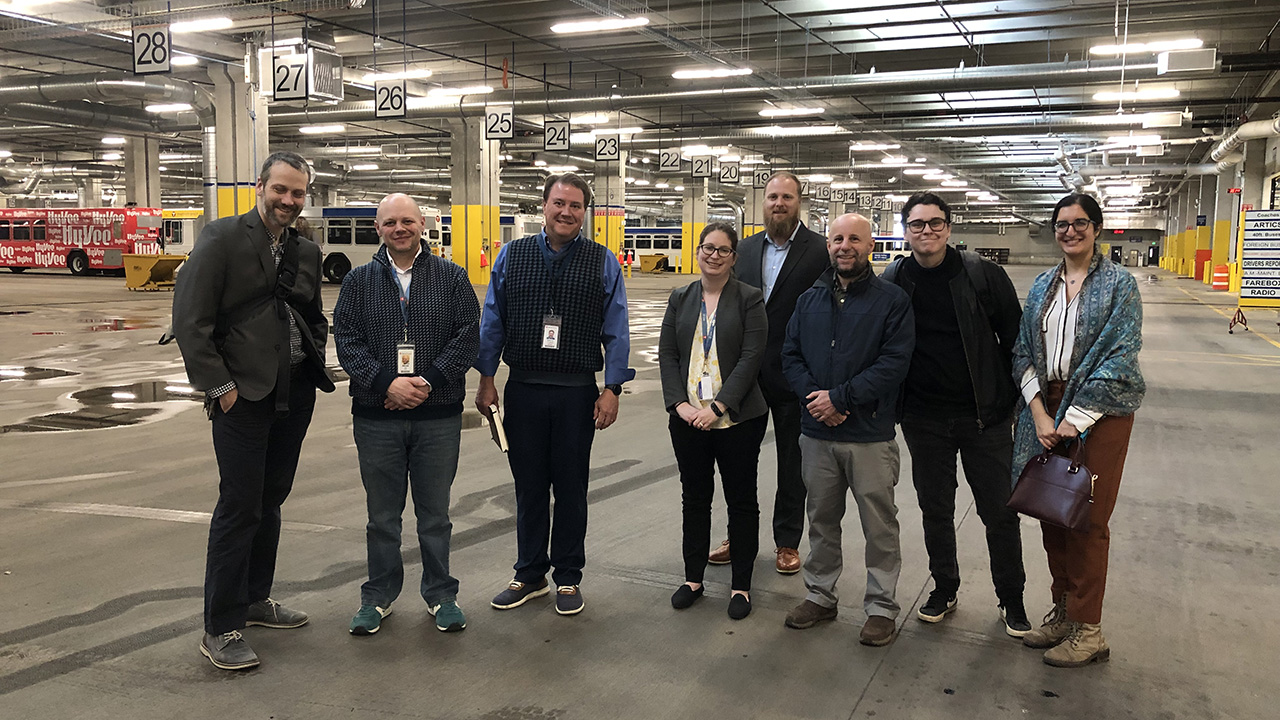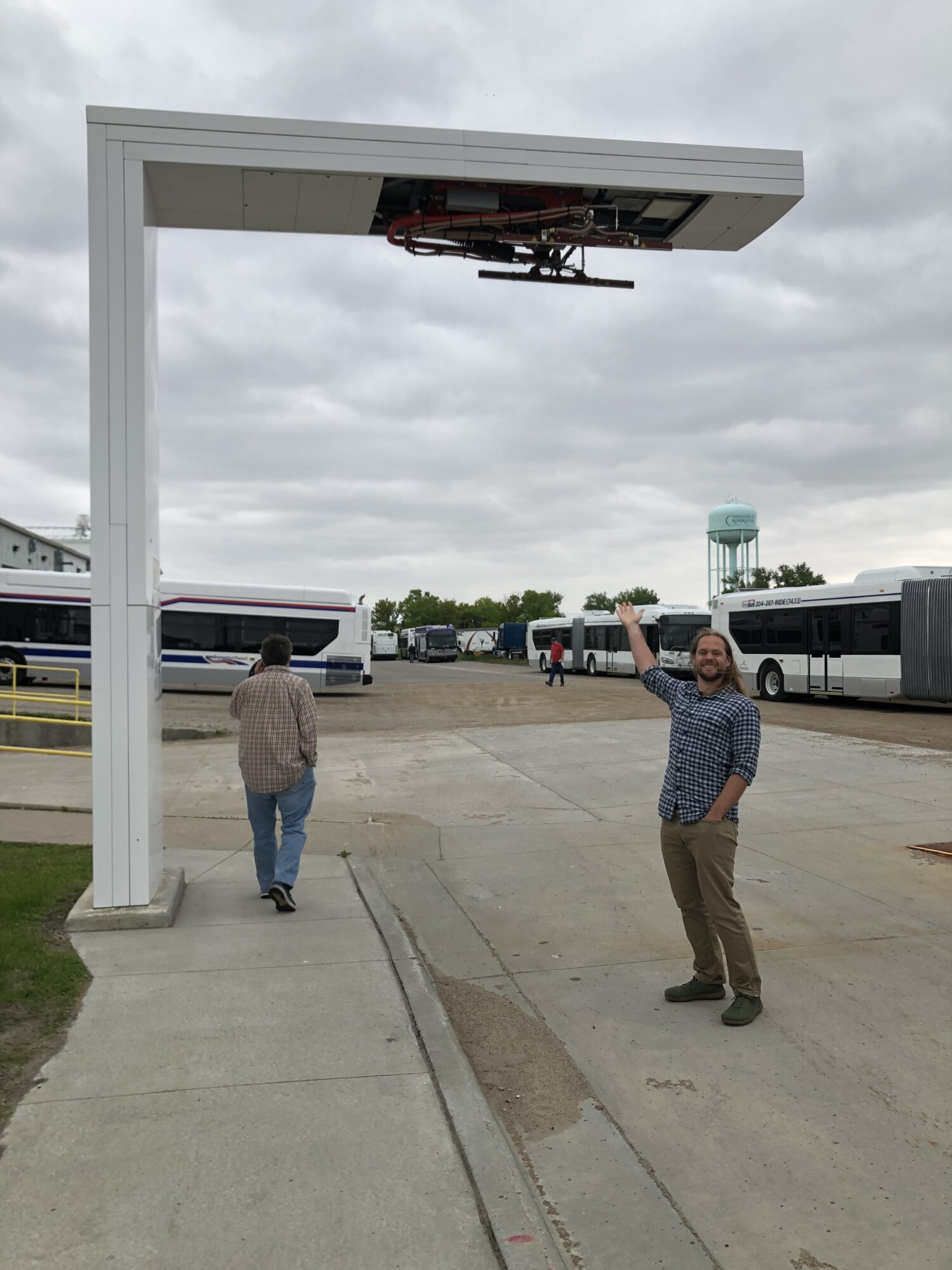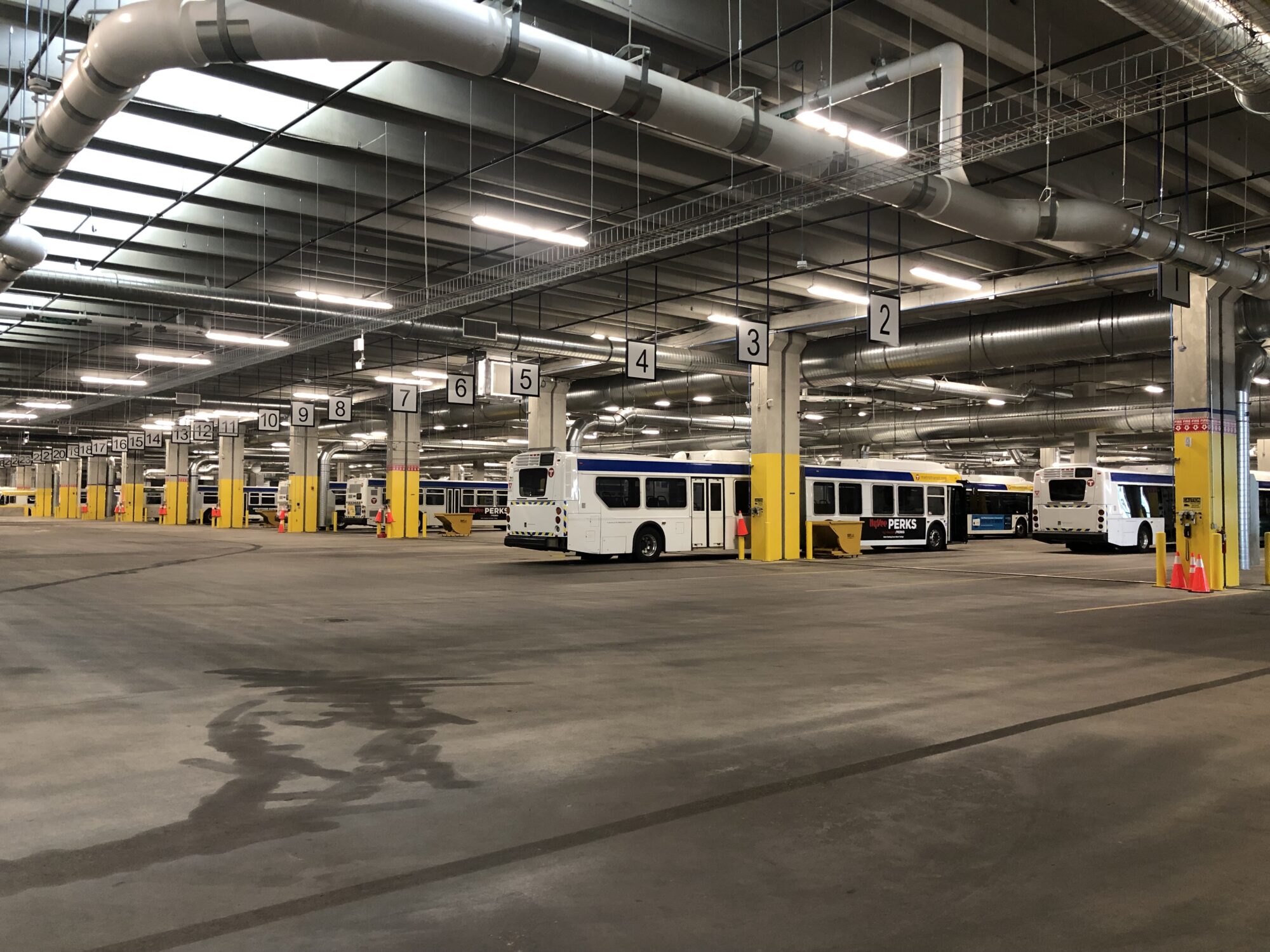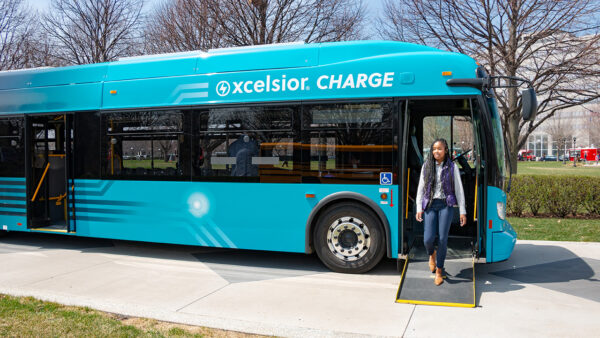
Pursuing legislative policies and regulatory actions that support rapid adoption of personal electric vehicles (EVs) and expand charging infrastructure have been the bread and butter of Fresh Energy’s transportation team for many years, as evidenced by the Clean Cars Minnesota campaign or multi-year foray into utility programs for residential and commercial EV charging, including for heavy-duty vehicles like buses.
However, to meet our state and international climate goals, we will need to both electrify the way we move and enable more Minnesotans to forgo the personal vehicle in favor of other mobility options, like public transit. Enter zero-emission transit buses, which sit at the nexus of these two solutions and are a core part of an equitable, carbon-free transportation future.
But first, what is a zero-emission bus? Zero-emission buses can include both battery electric buses that draw and store electricity from the electric grid and fuel cell buses that are fueled by hydrogen and emit only water at their tailpipe. Because fuel cell buses are propelled by electricity generated by the fuel cell, both battery electric buses and fuel cell buses are also considered “electric” buses. However, most electric transit buses in Minnesota are battery electric buses, so much of the discussion below will focus on battery electric buses rather than fuel cell buses. Also, we’ll use the terms “electric transit bus” and “zero-emission bus” interchangeably.
Read on to learn more about what’s been happening in Minnesota to date and how advocates like Fresh Energy are working together on policies that make healthy, accessible transit a reality.
Why do electric transit buses matter?
Because we need to meet our climate goals
Those who are tracking sources of climate pollution in the transportation sector in Minnesota may be wondering – why bother with transit buses at all, since they contribute a fraction of the greenhouse gases (GHGs) that personal vehicles do?

In 2020, all buses (which includes transit buses but also school buses) in Minnesota accounted for 1.7% of the state’s transportation sector greenhouse gases. However, international and state climate goals call for us to zero out emissions across all parts of our economy by 2050. That means, even though buses are a small slice of our overall transportation sector climate emissions, they still need to reach zero by 2050. Since transit buses have an average life of 12 to 14 years we need to ensure all new transit bus purchases in the state are zero-emissions (i.e. electric) by no later than 2035.
Electrifying whole transit fleets is complex from a funding and technical perspective too, which means we need the plans, policies, and investments in place now to be successful in meeting our climate goals.
Because they are part of a just and equitable clean energy transition
There’s more reason to electrify our transit buses than simply emissions reductions, though. Transportation contributes to almost half of the air pollution in Minnesota. A major component of air pollution is particulate matter (i.e. soot), which is common in the diesel exhaust from heavier vehicles like transit buses and trucks. Long term exposure to particulate matter is linked to a higher risk of lung cancer, asthma attacks, and cardiovascular disease. And this pollution burden isn’t distributed evenly in Minnesota. Communities of color and under-resourced households are most exposed to and harmed by air pollution. Electrifying transit buses and eliminating tailpipe pollution is one small step to addressing these inequities.
Additionally, electric transit buses offer a more affordable and accessible way for more Minnesotans to enjoy clean transportation, without needing a personal vehicle or driver’s license.
Because there’s unprecedented federal and state funding
If there was a time to hit the accelerator on electric transit buses, it’s now. The 2021 Bipartisan Infrastructure Law included $5.6 billion for the Federal Transit Administration’s Low/No Emissions grant program, which provides competitive grants to transit agencies to purchase cleaner vehicles like electric buses. Since then, there have been a flurry of applications across the U.S. for zero-emission transit buses, with awards going to help purchase electric buses and upgrade transit facilities to support electric fleets.
Additionally, Minnesota passed a historic increase in dedicated public transit funding in the Twin Cities Metro region during the 2023 session of the Minnesota Legislature. These funds can be used to electrify transit buses, alongside expansion and improvement of public transportation writ large. Finally, the new state ‘green bank’, the Minnesota Climate Innovation Finance Authority, offers additional opportunities for defraying the costs of electrifying our state’s transit buses.
So, what’s been happening in Minnesota?

Minnesota has a lot going for it when it comes to zero-emission transit buses. First, we host one of only a handful electric bus manufacturing facilities in the U.S. New Flyer of America makes and assembles electric transit buses at its Crookston and Saint Cloud facilities for cities across the U.S. like New York City and Chicago, as well Minnesotan ones. This is important because federal grant programs like the Low/No Emissions program require buses to be made in America to qualify for funding.
Minnesota was also an early mover on trying and testing out electric buses in cold climates. Metro Transit, the main transit provider for the Twin Cities region, started using hybrid electric buses in 2002. In 2019, it introduced eight battery electric buses to the METRO C Line which runs in Minneapolis. Another five 60-foot battery electric buses will be placed on the METRO Gold Line out to the eastern suburbs, and an additional 20 40-foot buses have been ordered as well, along with the necessary charging equipment. To support its growing electric bus fleet, Metro Transit designed its new North Loop garage to be able to charge and maintain battery electric buses. Read more about Metro Transit’s electrification journey here.

Other transit providers in the state have also dipped their toes into going electric. Duluth Transit Agency started operating its seven 40-foot battery electric buses in 2019, Rochester got its first two 60-foot electric buses in 2022 (and added another two in 2023), and SouthWest Transit, a suburban transit provider, expects its first electric bus this year, and aims to have an all-electric fleet by 2050.
Of course, with any new technology, there will be challenges. Early movers on electric bus technology like Metro Transit and Duluth Transit Agencies have had to learn-by-doing, adapting the routes of their electric fleet as both bus technology and charger technology proved different and, in some cases, less reliable than expected. Charging equipment issues, supply chain delays for replacement parts, limited range of early electric bus models, and higher upfront costs than diesel buses have all arisen as challenges for transit agencies to solve.
And solving they are. Taking on the spirit of experimentation needed to master any new technology, Metro Transit is now testing out several electric bus and charging equipment models to see which ones are best suited for its various routes. Newer electric bus models also have longer ranges than previous ones, helping to mitigate earlier route issues. While manufacturing enough electric buses domestically to meet increasing demand remains an issue (one which federal officials are keenly aware of and even called a roundtable for earlier this year), the constraint is also a signal of where the industry is heading, as more transit agencies across the country commit to fully electric bus fleets over the coming decades.
The transition to zero-emission buses also brings with it untapped opportunities, from building a local clean energy workforce that can make these buses right here in Minnesota, to offering a healthier and more comfortable experience for bus operators, riders, and residents alike as tailpipe emissions are eliminated and noise is reduced, to possibly even providing grid benefits through vehicle-to-grid technologies.
What are advocates doing to help this transition along?
The shift to electric buses has been spurred and supported by advocates and lawmakers interested in expanding affordable clean transportation options. The Coalition for Clean Transportation in particular, of which Fresh Energy is a founding member, has been at the forefront of supporting zero-emission transit buses since its inception in 2018, when the Coalition called upon Metro Transit to commit to buying only electric buses after a certain date. That call for action led to public awareness building and in 2021, legislation passed that directed Metro Transit to create a Zero-Emission Bus Transition Plan (ZEBTP) outlining how the agency would electrify its fleet.
In 2024, the Coalition worked with lawmakers to update that enabling legislation to give Metro Transit a clear runway to fully electrify its fleet, by requiring its ZEBTP to consider only electric bus purchases starting in 2035. The updated legislation also asks Metro Transit to prioritize deployment of zero-emission buses in environmental justice areas; to analyze the climate benefits of electrification with broader public transit expansion; and to work with utilities to adequately plan for the necessarily grid infrastructure to support an increasingly electric transit fleet.
This latter point is critical to Fresh Energy’s work at the Minnesota Public Utilities Commission. Both Metro Transit and Duluth Transit Agencies participate in electric vehicle charging programs run by Xcel Energy and Minnesota Power, respectively, which are reviewed every two years as part of electric utilities’ Transportation Electrification Plan. Fresh Energy has been a leading voice at the Commission on electric vehicle topics, and will continue to dig into the utility planning process so that transit agencies have a smooth path to electrification.
What comes next?
Transit electrification is a shining example of how we can build an equitable, carbon-free future that brings healthy clean energy solutions to all Minnesotans. Fresh Energy will do our part in making sure the transition to electric buses is as easy as possible for transit agencies through our advocacy at the Commission for beneficial rate design and grid integration. We’ll also seek legislative and administrative solutions for electric buses through our combined efforts in the Coalition for Clean Transportation, and with other aligned partners in the electric vehicle and public transit space. Stay connected to Fresh Energy and the Coalition for Clean Transportation to stay in the loop on electric buses.



